Abstract
Five cases of primary amoebic meningoencephalitis associated with swimming in freshwater lakes have been recorded in Florida over the past 14 years. The present study demonstrated that pathogenic Naegleria, the causative agent, is relatively widespread. Twelve of 26 lakes sampled only once yielded the amoeba. Populations in three of five lakes sampled routinely reached levels of one amoeba per 25 ml of water tested during the hot summer months. Overwintering in freshwater lake bottom sediments was demonstrated, showing that thermal-discharge pollution of waters plays a miniscule, if any, role in the maintenance of pathogenic Naegleria in nature in this semitropical area.
Full text
PDF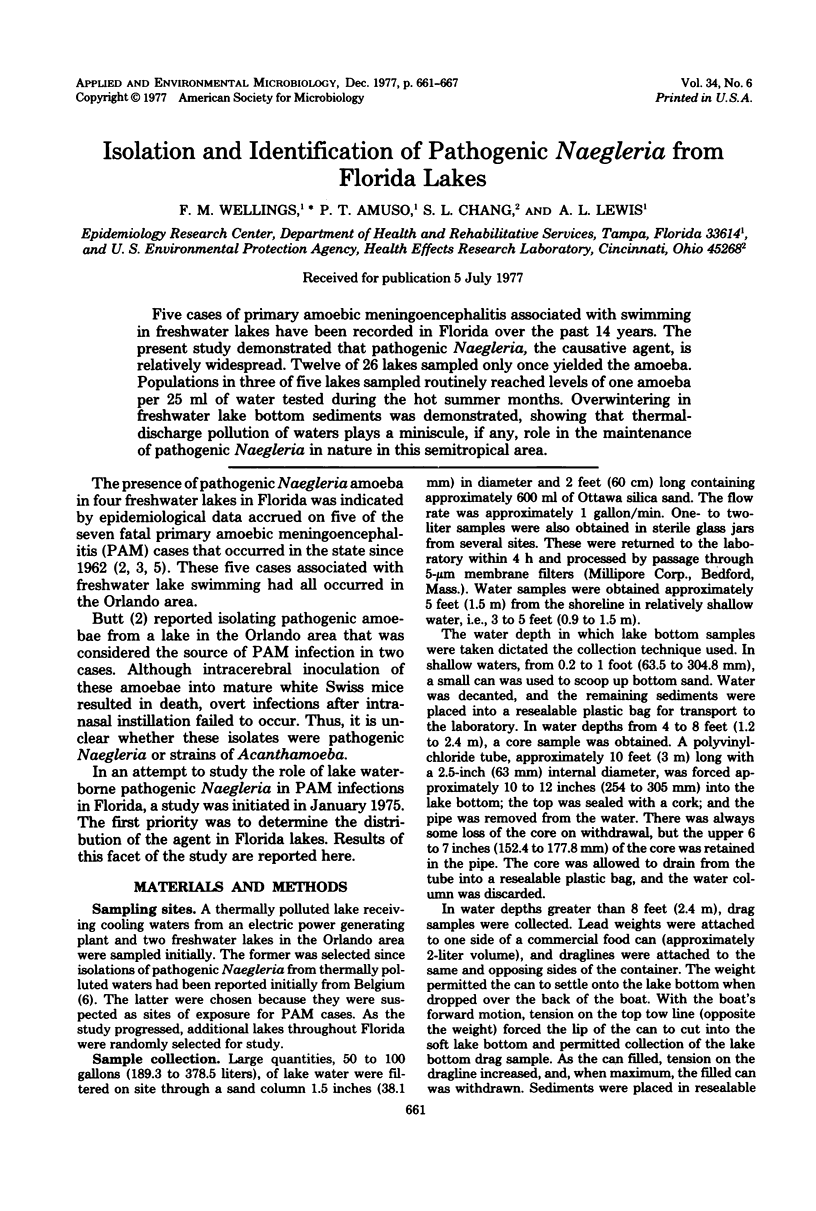
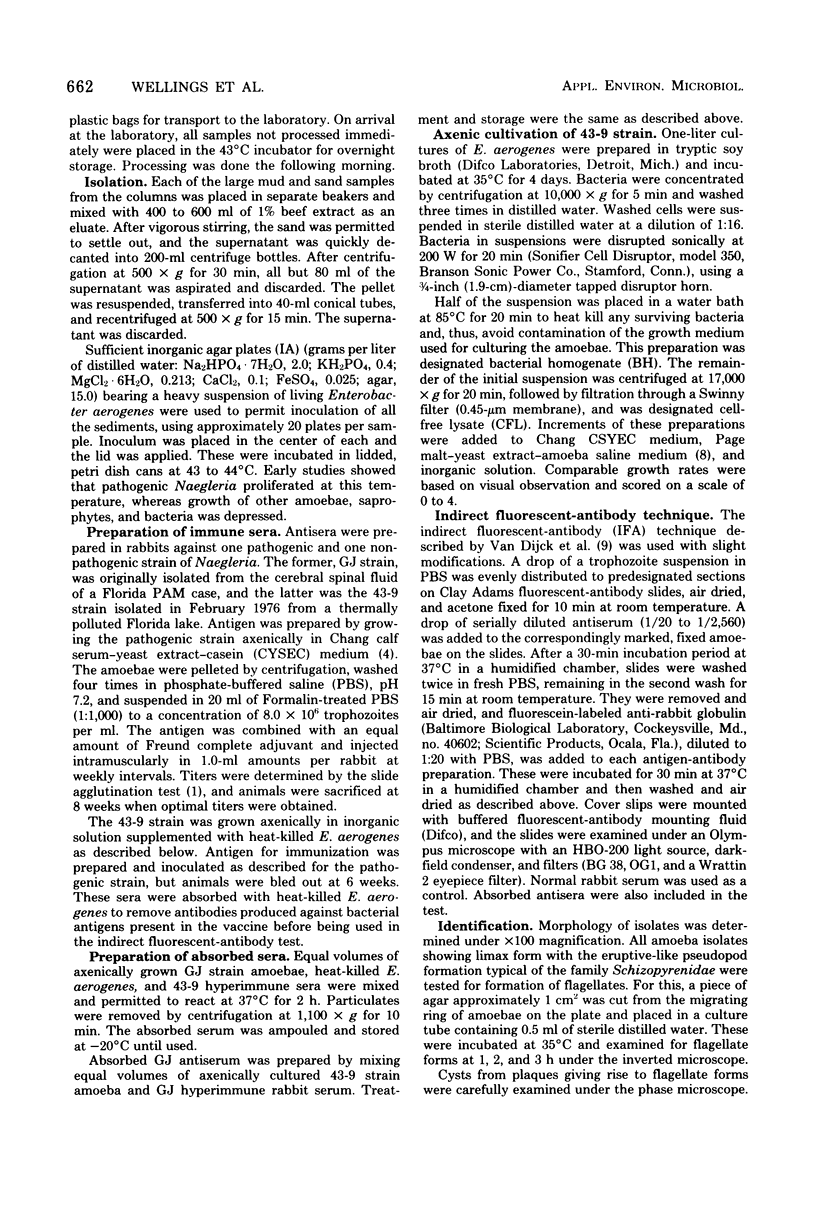
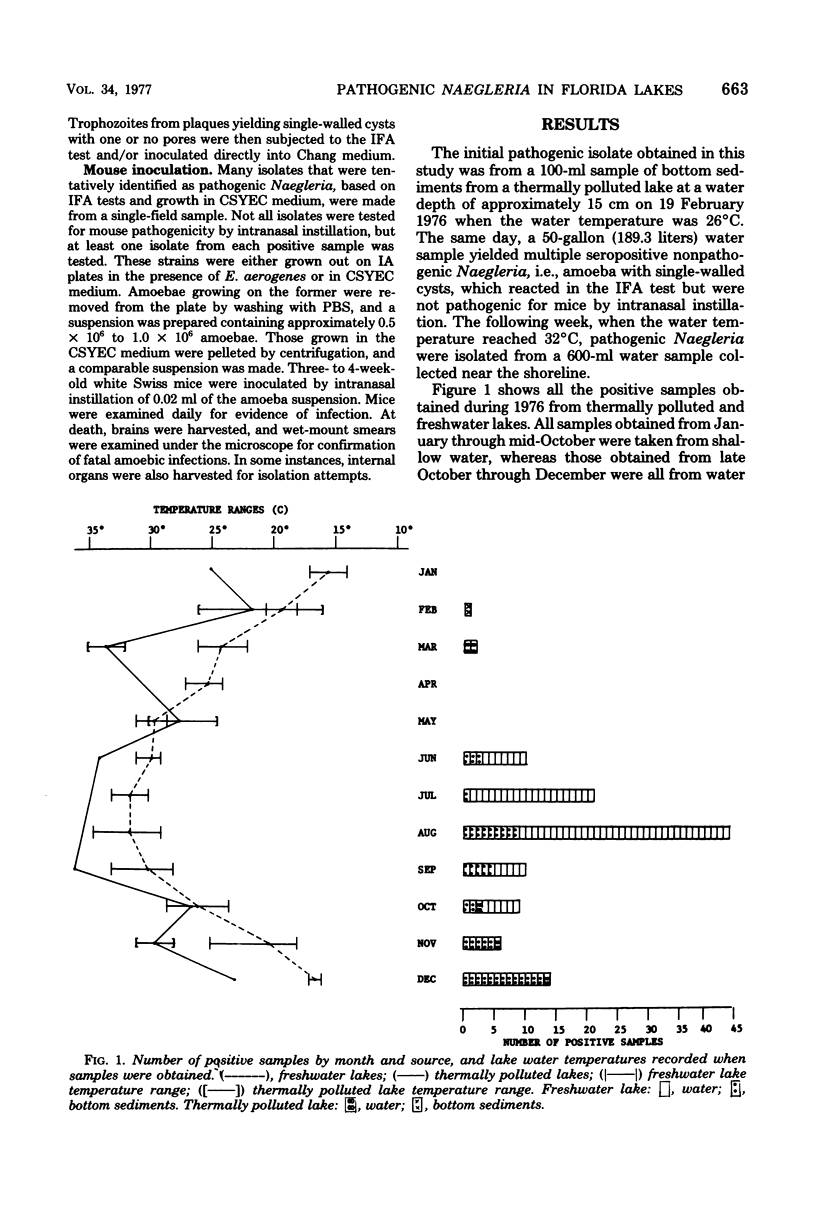

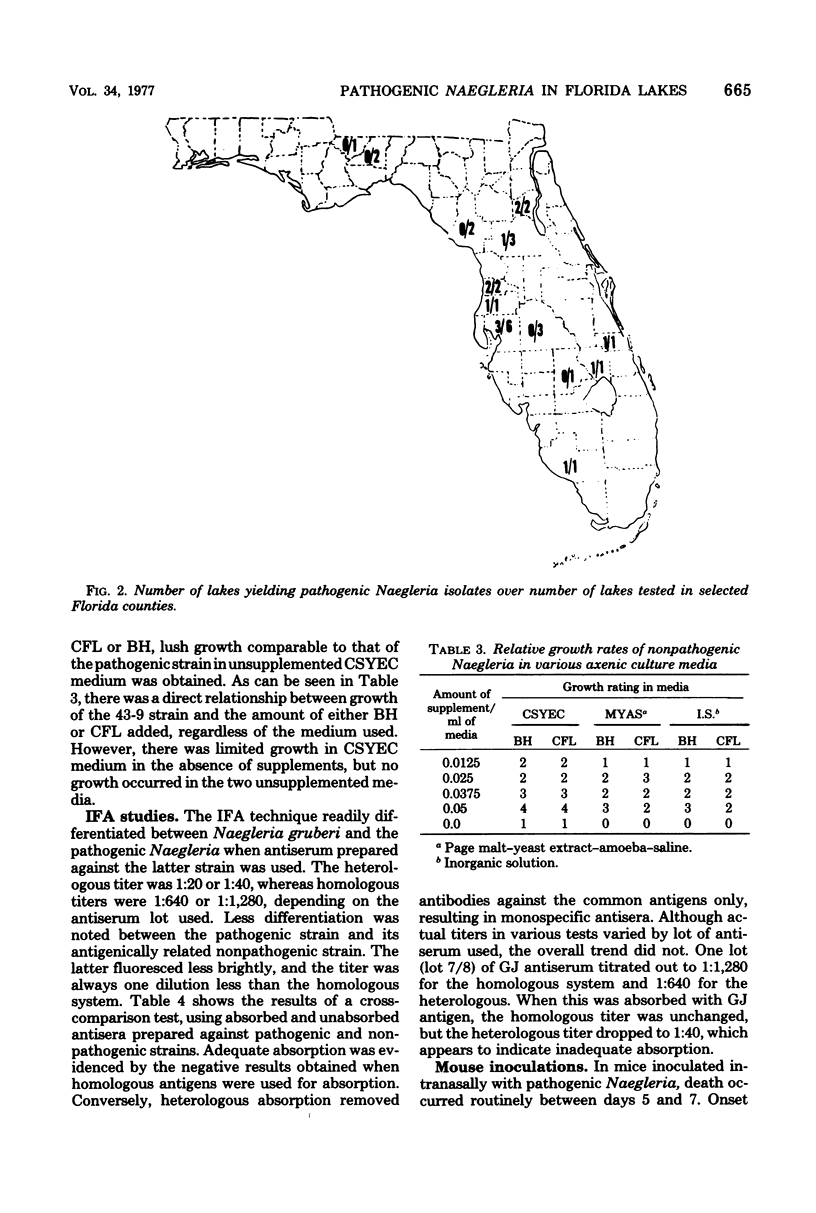
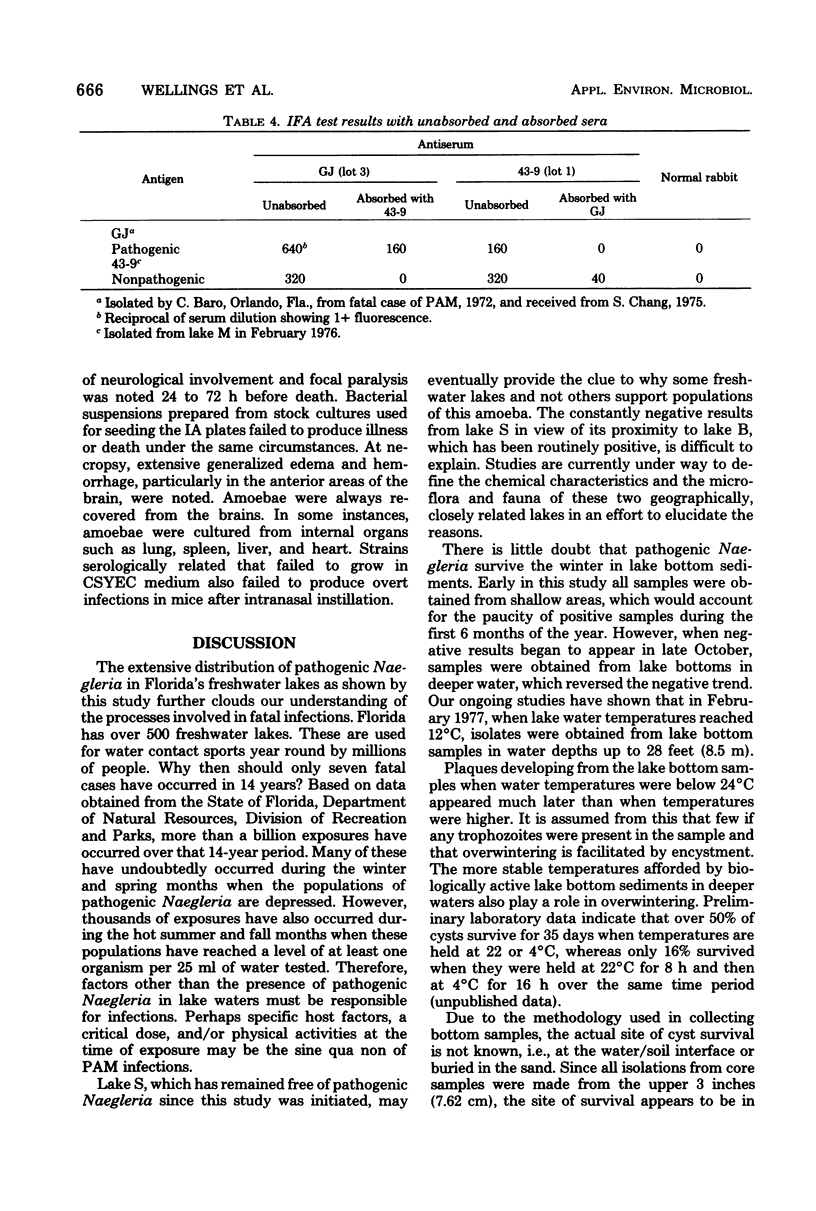
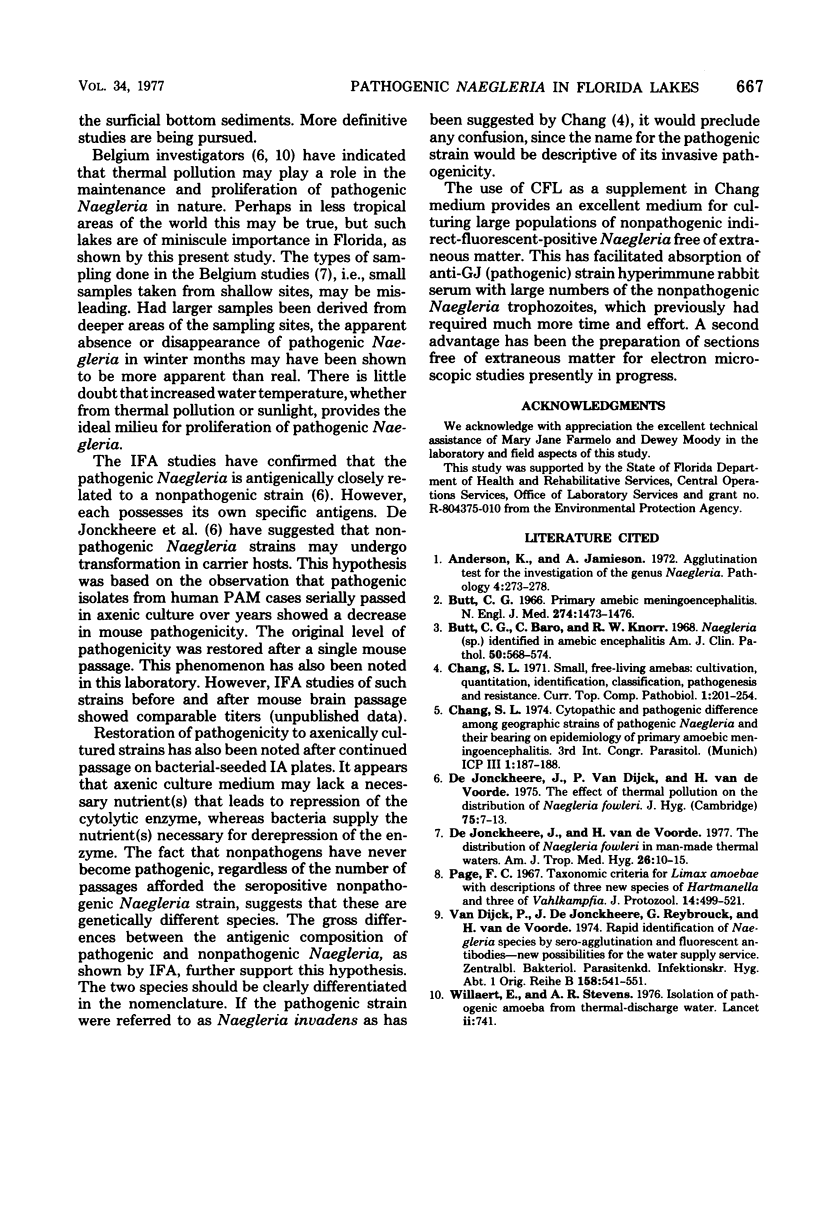
Selected References
These references are in PubMed. This may not be the complete list of references from this article.
- Anderson K., Jamieson A. Agglutination test for the investigation of the genus Naegleria. Pathology. 1972 Oct;4(4):273–278. doi: 10.3109/00313027209068953. [DOI] [PubMed] [Google Scholar]
- Butt C. G., Baro C., Knorr R. W. Naegleria (sp.) identified in amebic encephalitis. Am J Clin Pathol. 1968 Nov;50(5):568–574. doi: 10.1093/ajcp/50.5.568. [DOI] [PubMed] [Google Scholar]
- Butt C. G. Primary amebic meningoencephalitis. N Engl J Med. 1966 Jun 30;274(26):1473–1476. doi: 10.1056/NEJM196606302742605. [DOI] [PubMed] [Google Scholar]
- Chang S. L. Small, free-living amebas: cultivation, quantitation, identification, classification, pathogenesis, and resistance. Curr Top Comp Pathobiol. 1971;1:201–254. doi: 10.1016/b978-0-12-153401-1.50010-7. [DOI] [PubMed] [Google Scholar]
- De Jonckheere J., Van Dijck P., Van de Voorde H. The effect of thermal pollution on the distribution of Naegleria fowleri. J Hyg (Lond) 1975 Aug;75(1):7–13. doi: 10.1017/s0022172400047021. [DOI] [PMC free article] [PubMed] [Google Scholar]
- Page F. C. Taxonomic criteria for limax amoebae, with descriptions of 3 new species of Hartmannella and 3 of Vahlkampfia. J Protozool. 1967 Aug;14(3):499–521. doi: 10.1111/j.1550-7408.1967.tb02036.x. [DOI] [PubMed] [Google Scholar]
- Van Dijck P., De Jonckheere J., Reybrouck G., van de Voorde H. Rapid identification of Naegleria species by sero-agglutination and fluorescent antibodies-new possibilities for the water supply services. Zentralbl Bakteriol Orig B. 1974 Apr;158(6):541–551. [PubMed] [Google Scholar]
- Willaert E., Stevens A. R. Isolation of pathogenic amoeba from thermal-discharge water. Lancet. 1976 Oct 2;2(7988):741–741. doi: 10.1016/s0140-6736(76)90035-0. [DOI] [PubMed] [Google Scholar]
- de Jonckheere J., Voorde H. The distribution of Naegleria fowleri in man-made thermal waters. Am J Trop Med Hyg. 1977 Jan;26(1):10–15. doi: 10.4269/ajtmh.1977.26.10. [DOI] [PubMed] [Google Scholar]


